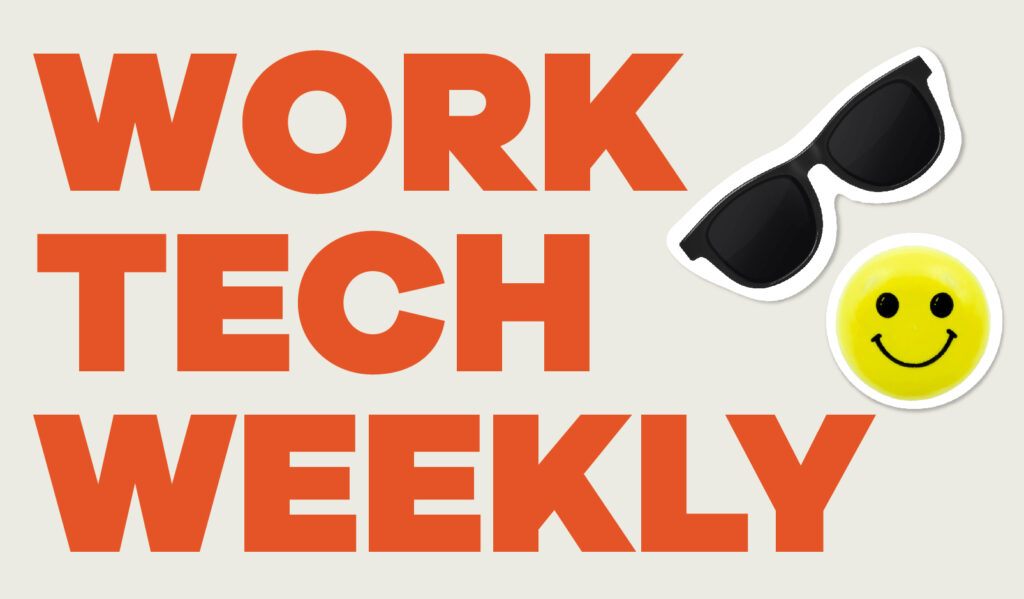Is your businesses making the most of its Love-ortunities?
I have a friend and former boss who used to say (only half-joking) that our lives are full of love-ortunities. That is, opportunities to love each other. Whether it’s at work, with loved ones — whatever — we have the power to make decisions that contribute to the wellbeing of ourselves and others every day.
This applies in the world of work too. In recent years, workplace tech, policies, and services have been developed that can dramatically improve individual wellbeing. And that’s not just a good thing for your people, that’s good for your bottom line. That’s because we know wellbeing is directly related to productivity.
In this blog, we’ll explore three love-ortunities that every organization has to improve wellbeing, enhance culture, and help your organization be more successful.
Give the gift of time
Don’t get me wrong. There’s value in meeting in person. Whether it’s creative collaboration or just having fun, seeing colleagues in person is truly irreplaceable (we’ll talk more about working face-to-face later on). That being said, a remote-first workplace can literally give your people a more meaningful life.
The amount of time people spend commuting to and from work has slowly increased over the years, from 25 minutes each way in 2006 to 27.6 minutes in 2019, according to the U.S. Census Bureau. In other words, people who commute to work spend nearly an hour each day getting to work and going home again. That means people are spending each day traveling while achieving zero displacement.

Commuting is also time that could be used for literally anything aside from driving a car or sitting on a train, where multitasking is hard. Trust me on this one, after spending years trying to read on The T, I feel confident saying it would be better to enjoy a good book or a podcast in the comfort of your own home instead of when you’re squished in between a bunch of strangers.
But it’s about more than just commute time. One study found that people who work from home spend one-third less time on personal grooming when they clock in from home compared with when they commute to the office. I’m not advocating for people to ignore personal hygiene, but this study clearly suggests that when there’s less pressure to impress people with your appearance, you have more time to devote to more important things. Like what? Anything! Exercise, reading with your child, learning how to use a pogo stick. Seriously, anything that fills your bucket.
People crave authentic recognition
People talk a lot about company culture, and most organizations would love to create a good culture for their employees. The thing is, “good company culture” is hard to define. For that reason, it’s hard to know how to even begin building one. The good news is, one thing we do know is that recognition plays a big role in creating a workplace where people feel valued, respected, and motivated. That’s important because one study found that toxic workplace culture is 10 times more important to retention than compensation. In other words, if people don’t feel comfortable at work, they won’t be sticking around.
The same study found that people crave recognition. In fact, organizations that don’t recognize and reward high performers have lower retention rates. Research also suggests that a lack of recognition contributes greatly to burnout. Finally, recognition also helps people feel more connected to their employer, which supports both good culture and retention.
It’s almost as if recognition and good company culture are somehow related. (Hint: They are).
When it comes to love-otunities, recognition is an easy win. Your organization’s recognition strategy can have all sorts of complexity with different kinds of rewards and shout-outs, but the premise is easy to understand: People like to feel appreciated. And recognizing someone’s hard work and successes is an easy way to make sure they’re getting the appreciation they need to feel like they’re a valued member of the team.
Younger employees lack community — so help them build it
An opinion piece in The New York Times made this bold statement: Remote work is failing your employees. This doesn’t apply to everyone, but for many younger workers in particular, the remote work revolution has been tough. Many Gen-Z employees were hired for remote jobs and have never stepped foot inside a physical office. They’ve never met colleagues in person. They’ve never had a face-to-face with their manager. In short, they feel like strangers at their workplace.
Despite the fact that many younger workers want and expect flexibility — remember how we talked about giving the gift of time earlier? — they also want the opportunity to collaborate with colleagues, learn from mentors, and make friends. For many Gen-Z employees, this means having the option to work on-site to some extent. It also means that many employees expect organizations to facilitate culture-building activities, whether they’re conducted in-person or virtually. In fact, one study found that a third of employees want team-building activities, organized time to socialize, and team meetings to be more frequent. Part of the reason for this is likely the fact that many younger workers report having few or no friends. That makes sense. In the aftermath of the pandemic shutdown, many people lost touch with friends. Not only that, those who have started jobs, and have remained, fully remote have had few opportunities to forge close relationships with coworkers over the last couple of years.
What can organizations do to help? Intentional efforts to build community are a good starting point. These manifest through a range of virtual or in-person activities, but whatever you do, make them unique to your organization. The best way to build community authentically is to follow the interests of your people. In other words, make the community your own — make it unique.
Building community also takes daily work, not just periodic social activities (no matter how good they are). It’s also helpful to offer employees an in-person work option, even if you’re a remote-first organization. This kind of diversified approach to community-building sends a message to your people that you value relationships and wellbeing. Not only that, it shows you care about providing your people with a healthy, welcoming organizational culture. In other words: It’s a love-ortunity.
Love-ortunities make a difference
When it comes to building a strong culture at your organization, look for love-ortunities. When you support your people by providing time, recognition, and building community, you’ll make the most of the love-ortunities that can make a difference in the lives of your employees. Not only that, you’ll set your organization up for long-term success by helping to ensure your people are engaged and motivated to stick around for the long term.




